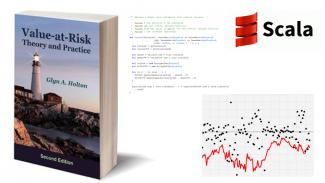
Introduction
Value-at-Risk is one of those fields where most of us know what it is all about but much fewer truly understand. Not to be surprised, since elaborating Value-at-Risk measures often require deep knowledge about both advanced statistics and financial instruments and markets. Nevertheless, Value-at-Risk has been playing a fundamental role in financial institutions for some decades now. It has also found its way into many non-financial businesses, for example those that manage energy and commodities. Hence, you never know when a good comprehension of the Value-at-Risk methodology might come in handy.
Risk management can be a very complex matter. The financial crisis of 2008 made it all too clear that not even the most sophisticated quantitative methods are foolproof. On the other hand, maybe it was not so much about the methods but their usage. Blind faith tends to have limited benefits in financial markets and corporate management. May it be quantitative or quantitative analysis, it is crucial to understand the assumptions, the scope and the limitations of any method we employ when forecasting future events and trends.
A very good read
The book “Value-at-Risk: Theory and Practice” by Glyn A. Holton, available on-line for free at https://www.value-at-risk.net, is an extraordinary source of information on Value-at-Risk methodology. It builds upon a bottom-up approach by laying out a mathematical and statistical basis, assembling the pieces together into a Value-at-Risk and Monte Carlo simulation framework and finally putting it all into a practical context of implementation and continuous improvement.
The author’s experience of Value-at-Risk goes back to the early1990’s when this part of modern risk management had just recently been conceived. Thus, “Value-at-Risk: Theory and Practice” is a book that contains a synthesis of knowledge acquired during three decades of consultancy and research in the field of risk management in general and Value-at-Risk in particular. These things of course matters both for the well-thought structure of the book and for its excellent content, a fine blend of theoretical concepts and real world-applications.
Going digital
Every chapter in the book “Value-at-Risk: Theory and Practice” comes with a collection of exercises. These are pedagogically well-designed and extremely useful for the learning process. Answers are provided separately as pen-and-paper or spreadsheet solutions to the exercises. Even so, we believe the reader could benefit from additional solutions based on computer programming. Firstly, the logics in the code could provide additional information about the steps that lead to the answer. Secondly, further tweaking of the code allows for experimenting with sample sizes, modified models or formulas and so on. Thirdly, the code might be refined and implemented in software.
The programming has been carried out with Scala, a multi-paradigm language based on Java but introducing a more modern and concise coding, similar to Python or Ruby. At first, a goal was to make heavy use of Apache Spark in the programs. However, for pedagogical reasons we mainly shifted into the Breeze API. Its linear algebra and statistics libraries are rather complete and in fact used in Spark too. Suggested solutions to all applicable exercises in the book have been published as Open Source Code at https://github.com/GimleDigital/Value-at-Risk. Enjoy!
- Log in to post comments